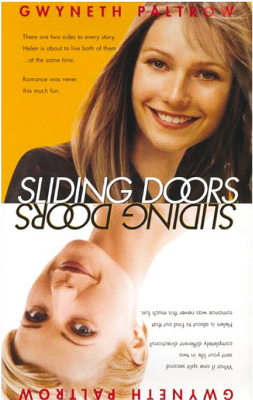7 Sliding Doors and stare decisis
This section uses a famous movie to introduce the challenge posed to the law if different judges made different decisions about similar cases.
Sliding Doors
Watch this short trailer for the film Sliding Doors [Tip: hold Ctrl and click a link to open it in a new tab. (Hide tip)] (open the video in a new tab or window by holding down Ctrl [or Cmd on a Mac] when you click on the link).
The film Sliding Doors follows two histories of a character played by Gwyneth Paltrow. One follows what happens to her if she catches her train, and the other if she misses it. As you can imagine, this small twist of fate leads to two totally different outcomes. Earlier in the course, particularly in Sections 3 and 4, you saw that some cases are ‘difficult’ or ‘hard’ so that one judge might decide one way and other judge might decide the other way. Imagine if Gwyneth Paltrow was a judge and her missing the train meant the case was assigned to another judge who would have made a different decision to her. If cases were decided differently depending on which judge happened to be assigned to a case, this could seem unfair. The losing party might well ask why they could not have a judge that would have decided the case in their favour.
You have also seen that in hard cases it is difficult to know what the right decision is. The first judge to decide a legal problem might suggest a rule that afterwards turns out to cause more problems than it solves. A second judge faced with a similar case might be tempted to apply a different rule. But this would cause uncertainty because nobody would know whether a judge is going to follow a previous judge or decide a different way.
The common law legal system therefore needs a method of balancing flexibility and certainty, and this method is known by its Latin name of stare decisis. Stare decisis just means ‘letting the decision stand’. The earlier case becomes called a ‘precedent’ because later courts are expected to follow it. In general, decisions in cases are allowed to stand, even if they might not be perfect. This provides certainty for the public and the parties. At the same time, higher courts can overturn decisions by lower courts, which provides some flexibility.

